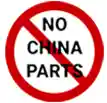When dealing with automotive and industrial machinery, understanding the different types of fuel level sensors and recognizing their benefits is essential for optimizing performance and safety. Fuel level sensors are crucial components that provide accurate readings of fuel quantities, enabling efficient management of resources and ensuring operational reliability. This blog delves into the various types of fuel level sensors available and explores their unique advantages.
One of the most commonly used types of fuel level sensors is the resistive fuel level sensor. This type operates on a simple principle: as the fuel level changes, so does the resistance in the sensor’s circuit. Typically, a float connected to a potentiometer moves up and down with the liquid level, altering the resistance accordingly. The primary benefit of resistive fuel level sensors lies in their relatively low production cost and ease of installation, making them a popular choice for many applications. However, they can be susceptible to wear and tear due to moving parts, which might affect their longevity and accuracy over time.
Another innovative type is the capacitive fuel level sensor, which offers notable advancements in accuracy and durability by using the capacitance between two electrodes to determine the fuel level. The presence of fuel changes the capacitance measured by the sensor, which is then converted into a readable level indicator. Capacitive sensors are highly accurate and less prone to mechanical failures that can afflict resistive sensors, as they contain no moving parts. This makes them ideal for environments where precision is paramount and maintenance opportunities are limited.
For applications requiring the highest level of precision and robustness, ultrasonic fuel level sensors are increasingly becoming the go-to solution. These sensors calculate fuel levels by sending ultrasonic pulses down to the surface of the fuel and measuring the time it takes for the echo to return. The speed of this echo varies with the type of fuel and its level, providing a highly accurate measurement. Ultrasonic sensors are not affected by the dielectric constant of the fuel, which can vary between different types of fuel, making them versatile across various applications. Additionally, since these sensors do not require direct contact with the fuel, they are suitable for use with corrosive substances or in high-pressure environments.
Though less common, optical fuel level sensors offer unique advantages in specific contexts by working through the detection of light refraction caused by the presence of fuel. When used in clear, less viscous liquids, optical sensors can provide exact measurements. Their primary benefit lies in their immunity to substances like foam and vapor, which are common challenges in volatile fuel environments. However, their use is generally limited to specific conditions where their high sensitivity to changes can be fully utilized.
The benefits of using advanced fuel level sensors extend beyond mere measurement. With the ability to deliver real-time data on fuel usage, these sensors play a pivotal role in managing operational costs and enhancing efficiency. For instance, in fleet management, accurate fuel level readings help in scheduling refueling stops, which can lead to substantial savings and optimized route planning. Similarly, in industries like agriculture or construction, where equipment must operate in remote areas, having precise fuel data can prevent downtime and boost productivity.
Moreover, the environmental impact of accurate fuel monitoring should not be underestimated. By ensuring that machines and vehicles are only refueled as necessary, these sensors help minimize the risk of overfilling and reduce the likelihood of spills. This not only protects the natural environment, but also helps industries comply with increasingly stringent environmental regulations.
In conclusion, the selection of a fuel level sensor should be based on the specific needs of the application, considering factors such as the type of fuel, the required accuracy, and the operational environment. We invite you to browse our pressure sensor products, fuel tank components, and other similar items here on Buy Civil Aircraft Parts at your own pace, where you can use our online Request for Quotation (RFQ) service to effortlessly secure quotes for offerings that capture your interest. Upon receipt and assessment of a completed RFQ form, one of our experts will contact you in 15 minutes or less to provide you with a tailored solution for your comparisons. To discuss how we can meet your particular requirements, reach out to one of our industry specialists today!
Posted on May 7, 2024 leo simon



“We Proudly Support Intrepid Fallen Heroes Fund that serves United States Military Personal experiencing the Invisible Wounds of War : Traumatic Brain Injury (TBI) and Post Traumatic Stress (PTS). Please visit website (www.fallenheroesfund.org) and help in their valiant effort”.
We Hope that You Will Visit Us Again the Next Time You Need Aircraft Parts and Make Us Your Strategic Purchasing Partner.
Request for Quote